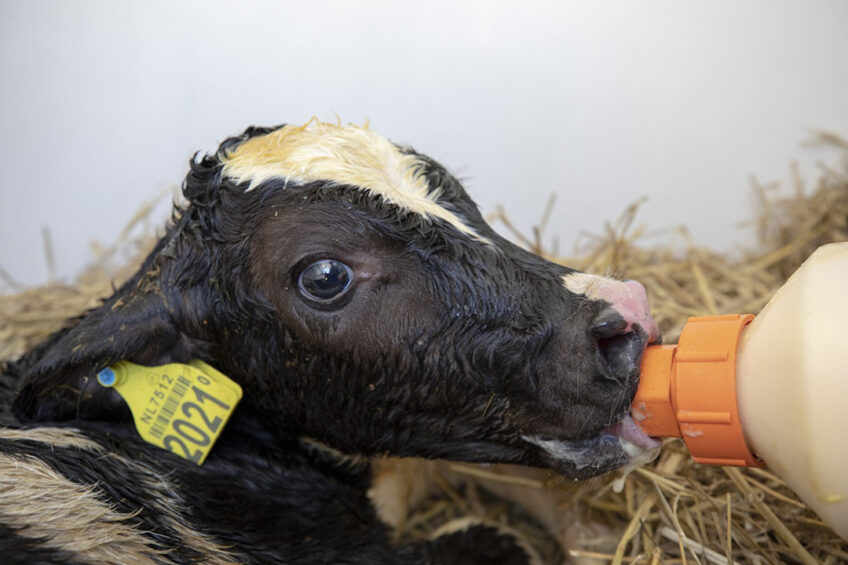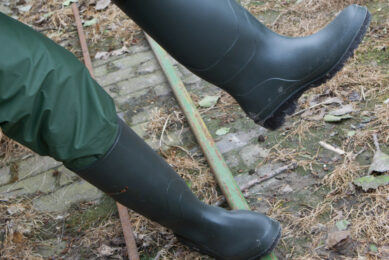A closer look at Bovine Coronavirus in calves

Bovine Coronavirus (BCoV) infection in calves causes major economic losses to the dairy (and beef) industry worldwide. We dig deep into what the respiratory signs of the infection are, treatment, and control measures.
Bovine coronavirus (BCoV) is a major viral pathogen associated with respiratory tract disorders and enteric disease problems in the neonatal calf. The virus is shed both through respiratory and enteric secretions in high amounts (1 billion virus particles per ml) for up to 14 days. Consequently, BCoV infection is transmitted by fecal- respiratory route from the mother to the offspring or between calves.

Why calves?
Calves are born with an underdeveloped immune system. Key parts of a calf’s immune system are present, but at much lower levels than an adult cow. This means the newborn calf’s immune system is slower to respond to pathogens (disease-causing bacteria, viruses, or microorganisms) and when it does, the response is weak. The immune system is not very effective until the calf is two to four weeks of age, and development continues until the calf reaches breeding age. This leaves the calf vulnerable to disease for a significant period of time at a crucial point in its development.
Predisposing factors of infection
The incidence of BCoV varies between 15% and 70% in naturally occurring outbreaks worldwide. The following are the key factors determining the magnitude of infection:
Parity: The first-lactation heifers produce lower yields of colostrum and lower immunoglobulin (Ig) concentration in colostrum than cows in their second or subsequent lactation (Table 1). Therefore, calves born to these heifers are more susceptible to BCoV infection.
Cold stress: Cold stress has negative effects on the absorptive function by the intestine, and hence on the concentration of all classes of colostrum Ig in the serum of the hypothermic calves.
Husbandry systems: Under intensive management systems adopted in dairy farms, there is a close interaction between calves since these animals are reared and fed milk replacers lacking antibodies, in stark contrast with beef cattle farms, where herds are reared under extensive management systems and calves are fed directly from the dams’ milk until they reached 6 months of age.
Calf respiratory BCoV infections
Bovine coronavirus (BCoV) is an important cause of respiratory disease in calves. The virus replicates primarily in the nasal and tracheal epithelium, and occasionally in the lung, suggesting a lack of long-term mucosal immunity in the respiratory tract of calves after natural CoV infection. Respiratory signs include fever, serous nasal discharge, sneezing, coughing, and enzootic pneumonia. Coronavirus infections may be complicated by parasite infestation (e.g., Cryptosporidia, Eimeria) or bacterial infections (e.g., E. coli, Salmonella).

Strict hygiene and effective passive transfer by developing good colostrum-management protocols are critical. Vaccination must be given immediately at birth, before colostrum and possible infection with field virus, coupled with the use of antimicrobials to control the bacterial secondary infections. It is further recommended that milk containing high amounts of coronavirus-specific antibodies be fed to calves for the first 14 days of life to reduce the incidence and duration of viral shedding.
In terms of cross-species virus transmission, so far, it is not known whether the bovine coronavirus can cause disease to humans due to the host-specificity.
WHO’s recommendations
- Sick animals should never be slaughtered for consumption, and dead animals should be safely buried. Veterinarians should maintain a high level of vigilance and report any unusual event detected in any animal species present in the markets to veterinary authorities.
- Anyone visiting live animal markets or animal product markets should practice general hygiene measures. Attention should also be taken to avoid contact with potentially contaminated animal waste or fluids on the soil or structures of the market facilities.
- The consumption of raw or undercooked animal products should be avoided. Raw meat, milk, or animal organs should be handled with care, to avoid cross-contamination with uncooked foods, as per good food safety practices.
Until more is known about BCoV transmission and mutation, the above practices are recommended.
References are available from the author upon request.
Join 13,000+ subscribers
Subscribe to our newsletter to stay updated about all the need-to-know content in the dairy sector, two times a week.










